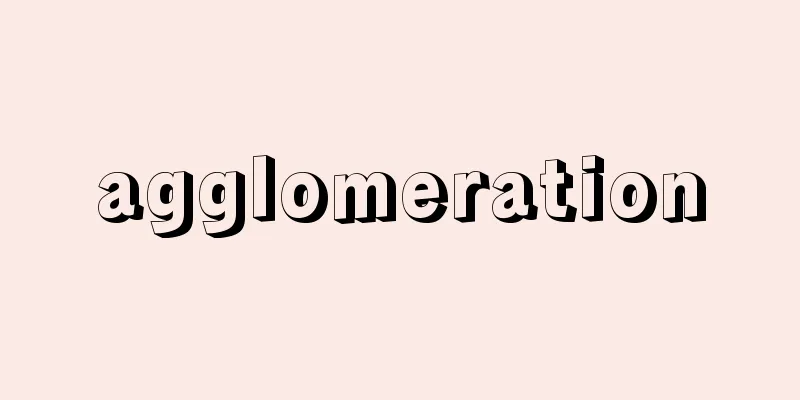Dengaku

|
〘Noun〙① A performing art that has been practiced since the Heian period. It is said to have originated from tamai, a dance performed by the rice fields accompanied by flutes and drums and sung on the banks of the fields to worship the rice god at rice planting time . Eventually, specialized dengaku priests were born, and their main arts consisted of group dancing using instruments such as waist drums, flutes, bronze horns, and binzasara , as well as acrobatics such as riding on a takaashi (a tall pedestal) , using hindama (a ball), and throwing swords. From the Kamakura period to the Muromachi period, dengaku became popular and gave birth to dengaku noh, forming troupes such as honza (a theater troupe) and niza (a theater troupe), and influencing sarugaku (a traditional Japanese dance) . It later declined, and various forms remain in various places today as folk performing arts. ※Otori Daimyojin Documents - April 5, 922 (Engi 22), Otori Shrine, Izumi Province, Records of the Rise "Hine Sanka District, those who traveled around, Jyuretsyo, Hosootokoyo, Dengaku and Santaneyo, and the two colors of Dengaku were sent to Otori District" ※Eika (around 1028-92) Gosoki "They also called dengaku, and <abbreviated> performed various dances with a sasara-style spear." ② Drums used in ①. ※Konjaku (around 1120) 28 "These men in white robes rode on horses, and sometimes had black dengaku tied around their stomachs." ③ Abbreviation of "dengaku-hoshi (dengaku priest)." ※Uji Shui (around 1221) 5 "The temple is crowded with about 12 blocks, and is filled with dengaku and sarugaku." ④ Abbreviation of "dengakuodori (dengaku dance)." ※Miscellaneous haiku, Yanagi Taru - 71 (1819) "Kinrinji is the only place where dengaku is not served with miso paste." ⑤ Abbreviation of "dengaku yaki (dengaku grilled food)" or "dengaku tofu (dengaku tofu)." 《Season: Spring》※Go-Nara-in Shinki - Tenbun 4 (1535) December 17 "Dengaku brings three packages." ⑥ Abbreviation of "dengaku gaeshi (dengaku return)." ※Kabuki, Shitenno Yagura Jyojo (1810) Important "The figure of Masuhana-onna disappears during the dengaku on the stone monument above." Source: The Selected Edition of the Japanese Language Dictionary About the Selected Edition of the Japanese Language Dictionary Information |
|
〘名〙① 平安時代から行なわれた芸能。もと、田植えの時に田の神をまつるため笛・太鼓を鳴らして田の畔で歌い舞った田舞(たまい)に始まるという。やがて専門の田楽法師が生まれ、腰鼓・笛・銅鈸子(どびょうし)・編木(びんざさら)などの楽器を用いた群舞と、高足(たかあし)に乗り、品玉を使い、刀剣を投げ渡しなどする曲芸とを本芸とした。鎌倉時代から室町時代にかけて田楽能を生んで盛んに流行し、本座・新座などの座を形成し、猿楽(さるがく)と影響しあった。のちに衰え、現在は種々のものが民俗芸能として各地に残っている。※大鳥大明神文書‐延喜二二年(922)四月五日・和泉国大鳥神社流記帳「日根参箇郡、依巡々者、十烈預、細男預田楽并参種預差定御供預、大楽両色預、差定大鳥郡」※栄花(1028‐92頃)御裳着「又でんがくといひて、〈略〉ささらといふ物突き、さまざまの舞して」② ①に用いる鼓。※今昔(1120頃か)二八「此の白装束の男共の馬に乗たる、或はひた黒なる田楽を腹に結付て」③ 「でんがくほうし(田楽法師)」の略。※宇治拾遺(1221頃)五「その坊は一二町ばかりよりひしめきて、田楽・猿楽などひしめき」④ 「でんがくおどり(田楽踊)」の略。※雑俳・柳多留‐七一(1819)「田楽に味噌をつけぬは金輪寺」⑤ 「でんがくやき(田楽焼)」または「でんがくどうふ(田楽豆腐)」の略。《季・春》※後奈良院宸記‐天文四年(1535)一二月一七日「でんがく三荷持参」⑥ 「でんがくがえし(田楽返)」の略。※歌舞伎・四天王櫓礎(1810)大切「桝花女の姿、上の石碑の田楽(デンガク)にて消える」
出典 精選版 日本国語大辞典精選版 日本国語大辞典について 情報 |
<<: The Dengaku Daigakushi (English: Dian-ge Da-xue-shi; Tien-ko Ta-hsüeh-shih)
Recommend
German literature
German literature means literature written in Ger...
Bandicoot - Bandicoot (English spelling)
A general term for animals belonging to the order...
René Le Senne
1882‐1954 French philosopher. Professor at the Sor...
Critical index
…Therefore, when one phase becomes unstable and t...
Tokyo Station
Located in Marunouchi, Chiyoda Ward, Tokyo, this ...
Suikosha - Suikosha
A social, research and mutual aid group for office...
Toluene - Toluene (English spelling)
A typical aromatic hydrocarbon. It is also called...
Cases of administrative litigation regarding illegal dispositions by administrative agencies
… 【Japan】 Japan's administrative court system...
Butterfly dragonfly - Butterfly dragonfly
An insect that belongs to the order Odonata and f...
Mr. Mizuhaya
A medieval warrior of Kawachi. In the Mizuhashiri ...
One mole - One mole
A perennial plant of the orchid family that grows ...
Shigematsu Kimura
1877-1938 (Meiji 10-Showa 13) A rakugo performer. ...
Lamut
… [Classification and distribution] The Tungusic ...
Oeda clan - Oeuji
…From the late Nara period to the end, the number...
Inatomi Sukenao - Inatomi Sukenao
Year of death: February 6, 1611 (March 20, 1611) Y...









